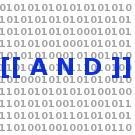\item We design a third protocol, called Perimeter-based Coverage Optimization (PeCO).
%which schedules nodes’ activities (wake up and sleep stages) with the objective of maintaining a good coverage ratio while maximizing the network lifetime. This protocol is applied in a distributed way in regular subregions obtained after partitioning the area of interest in a preliminary step. It works in periods and is based on the resolution of an integer program to select the subset of sensors operating in active status for each period.
-We have proposed a new mathematical optimization model. Instead of trying to cover a set of specified points/targets as in previous protocols and most of the methods proposed in the literature, we formulate a mixed-integer program based on perimeter coverage of each sensor. The model involves integer variables to capture the deviations between the actual level of coverage and the required level. The idea is that an optimal scheduling will be obtained by minimizing a weighted sum of these deviations. This contribution is demonstrated in chapter 6.
+We have proposed a new mathematical optimization model. Instead of trying to cover a set of specified points/targets as in previous protocols and most of the methods proposed in the literature, we formulate a mixed-integer program based on perimeter coverage of each sensor. The model involves variables to capture the deviations between the actual level of coverage and the required level. The idea is that an optimal scheduling will be obtained by minimizing a weighted sum of these deviations. This contribution is demonstrated in chapter 6.
\item %We add an improved model of energy consumption to assess the efficiency of our protocols.
We conducted extensive simulation experiments using the discrete event simulator OMNeT++, to demonstrate the efficiency of our protocols. We compared our proposed distributed optimization protocols with two approaches found in the literature: DESK~\cite{DESK} and GAF~\cite{GAF}. Simulation results based on multiple criteria (energy consumption, coverage ratio, network lifetime and so on) show that the proposed protocols can prolong efficiently the network lifetime and improve the coverage performance.

